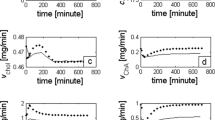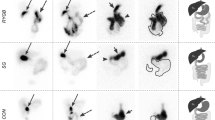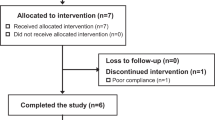Abstract
RABBITS receiving 0.25–1 per cent dietary cholestanol (5α-cholestan-3β-ol) for 3–6 weeks develop gall-stones which have been shown to consist predominantly of calcium, and sodium glycoallodeoxycholate (3α-, 12α-dihydroxy-5α-cholanoyl glycine)1,2. Gall-stone formation in cholestanol-fed rabbits has been postulated to occur as follows: Cholestanol is absorbed from the intestinal tract of the rabbit and is transported to the liver where some of the stanol is metabolized to allocholic acid (3α-, 7α-, 12α-trihydroxy-5α-cholanoic acid). The latter is conjugated with glycine, excreted into the bile and eventually reaches the intestinal tract where it is hydrolysed and dehydroxylated by the intestinal bacterial flora to form allodeoxycholic acid (3α-, 12α-dihydroxy-5α-cholanoic acid). This dihydroxy bile acid is reabsorbed and returns to the liver where it is conjugated with glycine and re-excreted into the bile as glycoallodeoxycholate. The mixed calcium and sodium salt of the latter is relatively insoluble in bile2, and therefore is thought to be the cause of gall-stones in cholestanol-fed rabbits. In contrast, the calcium–sodium salt of glycodeoxycholate is relatively soluble in aqueous media.
This is a preview of subscription content, access via your institution
Access options
Subscribe to this journal
Receive 51 print issues and online access
$199.00 per year
only $3.90 per issue
Buy this article
- Purchase on Springer Link
- Instant access to full article PDF
Prices may be subject to local taxes which are calculated during checkout
Similar content being viewed by others
References
Bevans, M., and Mosbach, E. H., Amer. Med. Assoc. Arch. Path., 62, 112 (1956).
Hofmann, A. F., and Mosbach, E. H., J. Biol. Chem., 239, 2813 (1964).
Standard Methods for the Examination of Water and Waste Water, eleventh ed. (Amer. Public Health Assoc., 1960).
Chattopadhyay, D. P., and Mosbach, E. H., Anal. Biochem., 10, 435 (1965).
Mosbach, E. H., Bevans, M., Kaplan, R., and Halpern, E., Arch. Path., 66, 72 (1958).
Borgström, S., Fajers, C. M., and Van der Linden, W., Acta Chir. Scandinav., 126, 329 (1963).
Author information
Authors and Affiliations
Rights and permissions
About this article
Cite this article
MOSBACH, E., BOKKENHEUSER, V., CHATTOPADHYAY, D. et al. Prevention of Cholestanol-induced Cholelithiasis by Neomycin. Nature 208, 1226–1227 (1965). https://doi.org/10.1038/2081226a0
Issue Date:
DOI: https://doi.org/10.1038/2081226a0
Comments
By submitting a comment you agree to abide by our Terms and Community Guidelines. If you find something abusive or that does not comply with our terms or guidelines please flag it as inappropriate.



